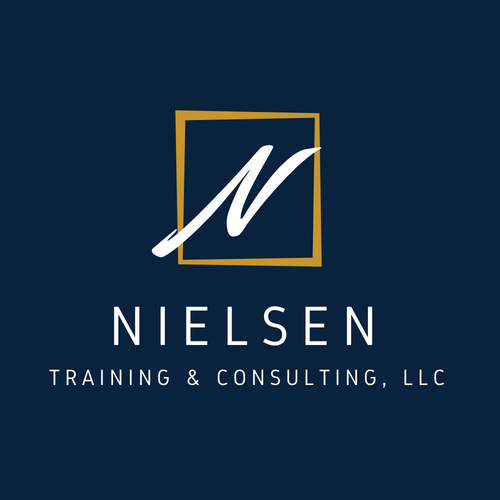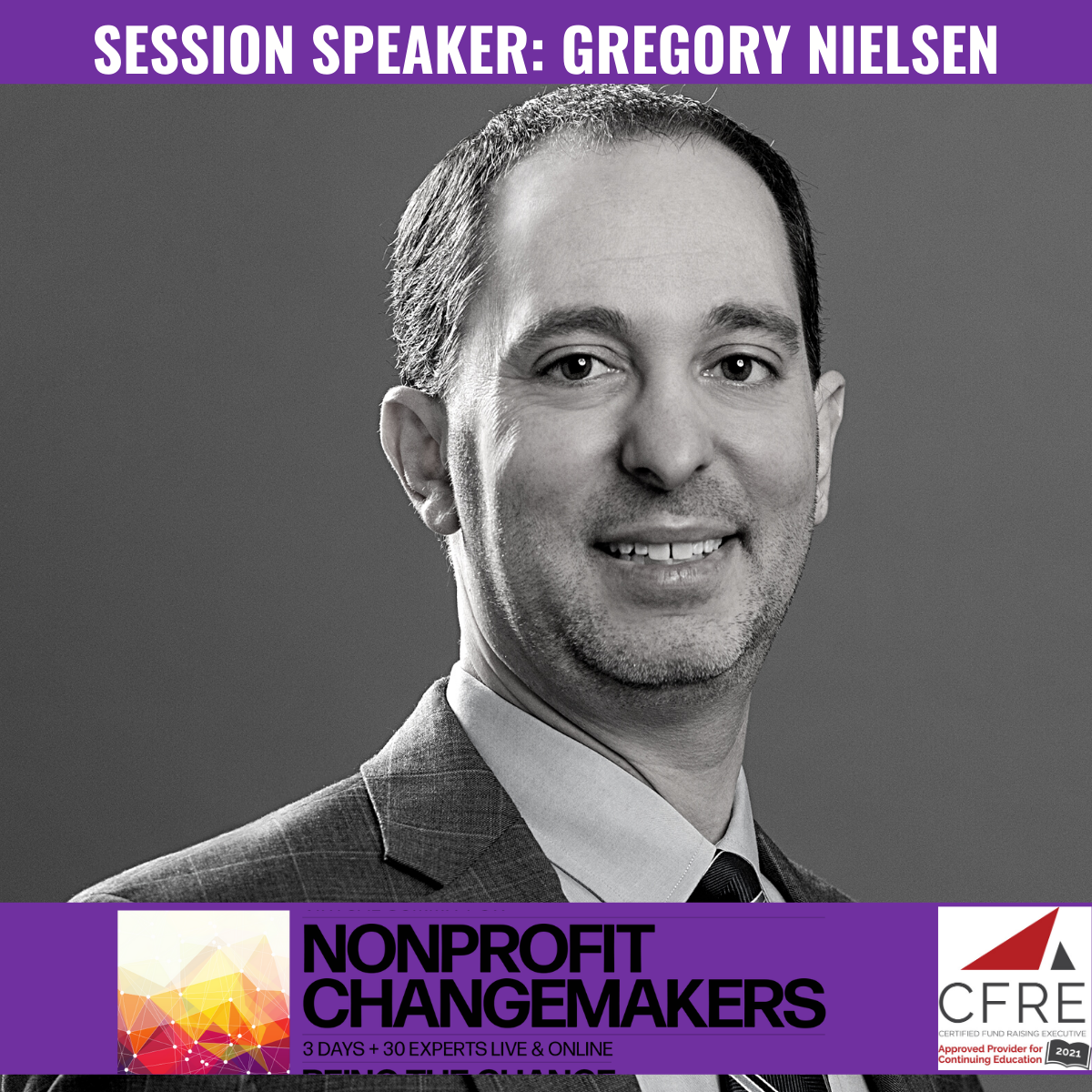Congratulations to the Board and Staff of Ronald McDonald House Charities of Kentuckiana (RMHCK) on the approval of their exciting and impactful new strategic plan! Over the past few months, it has been an honor to facilitate the strategic planning process for this amazing team and I am so inspired by their talent, passion, and commitment. Led by CEO Hal Hedley, the mission of RMHCK is to provide the home and support that allows families to stay together while they focus on the healing of their sick children at a critical time. Congratulations RMHCK team!
Reunions come in many different forms and for many different purposes. Class reunions. Family reunions. Team reunions. Many nonprofits are preparing for their own type of reunion over the coming weeks and months -- a Board reunion.
Over the past year or so, nonprofits have adapted to the challenges of the pandemic and most Boards have met virtually. This conversion has brought benefits such as improved attendance, and also challenges such as lack of personal interaction among Board teams. As Boards begin to return to some form of in-person gathering, here are some tips to ensure a smooth transition.
Devote time to relationship building.
While virtual platforms offer outstanding features to ensure effective meetings, many nonprofit Boards have missed that element of social interaction, of getting to know one another as colleagues and teammates. Through departures from and additions to the Board, your nonprofit may have several Board members who have never actually met one another in person. Before diving back into the business of the Board, consider the ways in which you might offer Board members an opportunity to re-engage with one another and develop the types of relationships found in healthy teams.
Tip: Consider a Board retreat or intentionally create other opportunities for Board members to get to know one another.
Assess the current strengths, challenges, and priorities of the Board.
We can’t forget that the past year has been highly disruptive for nonprofits and Boards -- personally, professionally, and organizationally. The health of your Board today may be very different (positively or negatively) than it was a year ago. Rather than assuming these changes will disappear upon a return to in-person meetings, consider pausing to assess that state of the Board.
Tip: Whether through a formal Board assessment or informal checkup, offer Board members the opportunity to reflect and hold a mirror up to the Board team -- what is going well, where are we struggling, and what are our most important priorities.
Develop new norms and expectations as a team.
Just as the strengths and challenges of the Board may have changed over the past year, the norms and expectations of the team may have evolved also. For example, many nonprofits are now evolving to a hybrid platform for Board meetings, where some members are comfortable being in-person and others more comfortable with joining remotely. Is your meeting frequency and schedule still optimal for the team or does it need to be altered? These are just a few of the questions your Board may want to address.
Tip: Board members tend to have greater ownership of norms and expectations they help create.
Know that the road is not always smooth. There may be bumps along the way. Like any team, Boards are challenging! Know that Nielsen Training & Consulting is your partner on this journey and we are here to offer any support or guidance you may need. We want to hear from you as you get the band back together!
Congratulations to the Board and staff of CASA of Graves County and Southwest KY on the approval of their exciting new strategic plan! It has been an honor to facilitate the strategic planning process for this organization that impacts the lives of so many children and families. CASA of Graves County & Southwest KY provides trained community volunteers for court appointment to advocate on behalf of dependent, abused, and neglected children.
Over the past several months, in partnership with Civitas Strategies, we have had the privilege of facilitating the strategic planning process for Evansville Goodwill Industries, Inc. Using the proven Finding Your North Star Tm system, the process included a thoughtful assessment of the landscape, engagement of the Board through a Board strategy retreat, and lively planning sessions with Board and staff leaders. We congratulate Evansville Goodwill Industries on the approval of their bold, impactful new strategic plan!
Excited to share that our podcast — Nonprofit Vision — has been named one of the Top 20 Nonprofit Leadership Podcasts You Must Follow in 2021 by Feedspot! We are #8 on the list!
With over 80 episodes available, Nonprofit Vision presents informative and entertaining conversations spotlighting critical issues in nonprofit leadership with the visionaries who are addressing them. You can find Nonprofit Vision on the NTC web site or on your favorite podcast platform such as Apple Podcasts, Google, Anchor, and more.
If you are already subscribed to the podcast, THANK YOU for helping us grow this special community of leaders! If you are not yet subscribed, check it out and let us know what you think. If you know of a nonprofit leader who might enjoy the podcast, please share it with them.
This article was written by Gary Romano, President and CEO of Civitas Strategies, a management consultancy focused on increasing the impact of mission-driven organizations, both for-profits and nonprofits.
Recently, a very wise person (our very own Alison LaRocca) stated, “Business models are the new strategic plan.” I agree — but even more than a strategic plan, a business model is how your whole enterprise will function now and in the future. It clearly encapsulates everything you do, from fundraising to delivering services in your community.
I often discuss business models in our work because — when done well — they are holistic and clear. They not only guide strategic direction and choices but help you to have productive conversations with potential supporters, align your staff, and provide clarity for those you serve.
But what exactly is a business model? And why should you care?
Check out these answers to the most frequent questions we get on business models and why you need to use them with your organization.
Who Should Have a Business Model?
You should! ... all right, that answer was perhaps a bit too simple. Let’s try this: all organizations should have a business model.
You may have one business model that encompasses everything you do, or you may have different models for each division or part of your organization. But to be clear, every part of your organization should be covered by a business model.
We’ve often heard nonprofit leaders refer to a business model as applying only to their “earned income enterprises,” such as the Girl Scouts of America’s cookie sales. Yes, the Girl Scouts need a business model to sell cookies, but they also need one to help girls develop into healthy, self-confident adults. So, the basic rule is, “If you’re doing it, it should have (or be part of) a business model.”
What Is a Business Model?
Now that you know you need a business model, what exactly is it? Many definitions exist out there, so let’s address the basics. A business model is a description of how you’re going to sustainably generate value for the world. Whatever you do that generates value for people, whether customers or consumers (and to know the vital difference, see our post: Not Semantics: Knowing Your Customers & Consumers), it needs a model on how you’re going to get it done.
The model can include lots of detail or a little, but the minimum components include the following:
The Value you’re going to provide. How will you help address customers’ and consumers’ “gains or pains”? That is, what are they going to get from you that they didn’t have before, or what barrier will you alleviate for them?
The Resources you need to deliver your value. The definition of “resources” is very broad—everything from cash to partnerships to favorable public policy.
Distribution Channels that you will use to deliver your value.
These are the basics. Certainly, there can be a lot more, but even if you just articulate these three points, you can say you have a model.
Why Develop a Business Model?
Having a business model isn’t a “nice to have” but rather a “must have” — with two immediate benefits for you as a leader.
First, it gives you a simple way to communicate about your operation as a whole to anyone, internally or externally. For internal communications, your business model can help align your staff by quickly equipping them to understand how everything comes together — rather than just knowing their part. Externally, the business model lends clarity to the way you describe how you help others and do it sustainability. In the least, it’s incredibly helpful for potential funders who may not be familiar with you or your field and want to learn about your organization quickly.
Second, the business model will help you show balance or see where you need it. That is, your value generation (for most of you, that’s the programs you provide to communities, families, and children) is no longer a separate enterprise from the activities that generate the resources you need (such as fund-raising or volunteer management). You can quickly see how the resources connect to programs or, more importantly, how they don’t connect. This proves a major challenge in the nonprofit world where the idea of “build it and they will come” remains so prevalent (that is, the assumption that if you get the services right, the resources will always follow).
How Do You Create a Business Model?
Again, there are many ways to create a business model, and numerous tools are available to assist in its development. My favorite is the business model canvass. A great short-video explains this tool, but here’s the synopsis: the canvass has a number of simple boxes that contain all the elements of your business model. It’s simple, which means you can pick it up quickly, but it isn’t simplistic.
Here are three ways you can use the business model canvass with your organization:
Describe your current operation and how it works. You may be surprised by how much of what you think is clear or aligned really isn’t.
Create a new vision — for how your organization can evolve or expand — rooted in the needs of your customers and consumers and tied to all the resources you need for success.
Map out a proposed new service or enterprise. So many times, leaders in the nonprofit world have great ideas that never come to fruition, not because the ideas lack merit, but because the leaders lack a clear sense of how they will realistically mobilize the resources needed to achieve them.
Take a few minutes and try to fill out a business model canvas for your organization, and you will see what I mean. You can start it quickly, but actually filling it in will take time and thought. Yet, that is effort well spent; you will soon have a clear sense of how your operation works, how to convey it to others, and how you can improve it.
___________________________________________________________________
Gary Romano is an award-winning strategist and experienced adviser for nonprofit leaders and entrepreneurs, driven by the vision that no child will grow up in poverty. In 2009, Gary founded Civitas Strategies to provide mission-driven organizations with the high-quality, cost-effective consulting services needed to improve outcomes for families and children.
Strategic planning presents an opportunity for nonprofits to systematically assess the landscape, enthusiastically engage their stakeholders, and thoughtfully plan for the future. Nielsen Training & Consulting is proud to be facilitating the strategic planning process with the talented team of CASA of Graves County & Southwest Kentucky. The mission of CASA is to provide trained community volunteers for court appointment to advocate on behalf of dependent, abused, and neglected children. Thoroughly enjoyed facilitating the Board strategy retreat as part of our process this past weekend!
Had a great time co-presenting yesterday with Ginny Waller at the Idaho Nonprofits Regional Conference. We led a session on "The Power of Partnership: Using High Impact Collaborations Strategically." Click below to explore Gregory Nielsen’s Speaker Sheet, including just a few potential topics.
Calling all nonprofit leaders and Board members! I invite you to join me for 3 days of learning, relationship building, and thoughtful conversations at the upcoming Virtual Summit for Nonprofit Changemakers hosted by TopNonprofits. Just a few of the many highlights:
💥Dates: March 23-25
💥Approved by CFRE for up to 29 CE units
💥Keynote presentation from Vu Le
I will be leading a session on "Roads to Success for Nonprofit Mergers and Sustainable Collaborations." Join me there!
Important changes have occurred to 2 key stimulus programs impacting nonprofits and small businesses -- PPP and ERTC. Hear the latest and how they can benefit your organization!
Thoroughly enjoyed spending yesterday with the Board of Directors of CASA of Northeast Kentucky leading our Board Champions workshop. CASA of Northeast Kentucky recruits, screens, trains, supervises, and supports community volunteers who advocate for children who are removed from their homes due to substantiated child abuse and neglect. If you want to make a difference in the life of as child in your community, look into becoming a volunteer for your local CASA program!
In Part 1 of this 2-part blog series, we explored the value of a Board Assessment as a tool for enhancing the health and performance of your Board. In Part 2, we will look at various methods of Board Assessment and address frequently asked questions to maximize the impact on your Board.
As with any project, when contemplating a Board Assessment, it is importnt to begin with the end in mind -- namely, what are you hoping to achieve through the effort? Generally speaking, assessments fall into one of two categories:
Individual Assessment
In an individual assessment, Board members reflect on their own performance as a member of the team. This provides an opportunity for members to consider questions such as:
Where have I made the most impact on the Board?
What experiences have I found most rewarding?
What aspects of governance have I found most challenging?
How do I feel my talents could be better utilized to benefit the team?
Often, you will find that Board members evaluate themselves far more critically than anyone else, but there is value in the enhanced self awareness. The benefit of an individual assessment is that Board leaders and the CEO gain vital insights into how best to put each member of the team in the best position to succeed.
Team Assessment
In a team assessment, Board members reflect on the performance of the team as a whole. This provides an opportunity for members to consider their view of the Board’s performance and effectiveness in key governance areas such as:
Policymaking
Planning
Fundraising
Ambassadorship
Financial and Programmatic Oversight
The Board can also weigh questions such as:
How do we feel about the size of the Board?
Do our meetings make good use of members’ time?
Is our committee structure aligned with our strategy?
Often, the greatest value of this process lies not in the instrument itself, but in the discussion that follows, as Board members take greater ownership of the leadership and functioning of their team. The Team Assessment also serves as a great tool for Board members to establish clear, actionable priorities and focus their efforts on defined opportunities for greater effectiveness.
Next, let’s address some frequently asked questions relative to Board Assessment:
How often should a Board undertake this assessment process?
I am a proponent of Boards undertaking a reflective or evaluative exercise of some kind on an annual basis, or at least every other year. Remember, there are different types of assessments, so you can vary it up and do an individual assessment one year and a team assessment the following year.
When is a particularly good time for a Board Assessment?
An annual Board retreat or the outset of a strategic planning process each represent a great opportunity to check-in on the health and performance of the Board. However, there is no bad time to step back and reflect on the effectiveness of the team!
How much time and effort should I spend researching various Board Assessments?
While you will find some meaningful differences between the various nonprofit Board Assessments available, you will find far more similarities. In my view, the greatest value of the assessment process lies in the facilitated discussion whereby the Board reflects on the results and establishes priorities. Therefore, time and effort is often better spent identifying a facilitator or trusted partner to guide your Board through this process in an effective way.
Whether you choose an individual or team assessment, your Board will find value in exploring ways in which they can tangibly improve their performance and culture as a team. If you have additional questions about Board Assessment, or would like to explore bringing the Nielsen Training & Consulting Signature Board Champions Assessment to your organization, please reach out to us at gregory@nielsenconsults.com.
Certain habits and routines are so familiar to us that we do them as a matter of practice. Once a year, it is recommended that we visit our doctor for a physical. Every 3,000 miles or so, we change the oil in our car. Every 6 months, we check the batteries in our smoke detectors at home. We don’t do these things because something is wrong or broken. Rather, we do them because there is value in checking in, value in a tune up, and value in establishing priorities for the future. Board assessment is similar in many ways.
In Part 1 of this 2-part blog series, explore the value of a Board Assessment as a tool for enhancing the health and performance of your Board. In Part 2, we will look at various tools and methods of Board Assessment and address frequently asked questions to maximize the impact on your Board.
Like any team, most nonprofit Boards will go through periods in which they are clicking on all cylinders and periods in which performance or effectiveness may dip. Just as having an annual physical may catch any symptoms of declining health at an early stage, so too can a Board Assessment help surface any early signals of declining effectiveness. A Board Assessment process offers the following benefits:
Greater Self Awareness
Boards are not able to address issues unless they first have a mechanism for identifying them. By providing Board members an opportunity to hold a mirror up to their own performance, a Board Assessment provides a safe and effective means of surfacing issues before they lead to conflict or dysfunction. Often, Board members will say during a discussion of the assessment results, “I had a feeling that was something we needed to address, but it is reassuring to see that others feel the same way.” On the flip side, a Board Assessment can also offer teams an opportunity to celebrate the areas in which they are thriving.
Alignment of Board Practices with Organizational Strategy
Boards, like nonprofit organizations themselves, proceed through stages of a life cycle. The practices of the Board of a fledgling nonprofit often differ from those of an established organization. Likewise, as the strategic priorities of a nonprofit evolve, so too must its Board habits to promote alignment and effectiveness. A Board Assessment helps align the priorities of the Board with the strategic imperatives of the organization.
Goal Setting
During Board retreats, I will often ask Board members, “What are your top priorities for the coming year as a Board?” Often, I will hear responses such as, “Be more engaged” or “Just be better.” While there is nothing wrong with these sentiments, they are akin to your doctor telling you at your physical to “Just be healthier.” The truth is that Boards have many responsibilities -- governance, fundraising, oversight, strategy, ambassadorship. It can seem overwhelming at times. A Board Assessment serves as an effective goal-setting process for Boards, helping members identify what’s important now (W.I.N.) and what 2-3 aspects of their governance responsibilities are most critical to address in the coming year. By providing tangible areas of focus and action steps, a facilitated Board Assessment can provide greater clarity and focus for your Board.
Be sure to check back for Part 2 of this blog series for discussion of the various types of Board Assessment and the benefits of each, along with answers to frequently asked questions! If you have additional questions about Board Assessment, or would like to explore bringing the Nielsen Training & Consulting Signature Board Champions Assessment to your organization, please reach out to us at gregory@nielsenconsults.com.
Nielsen Training & Consulting and Civitas Strategies are pleased to release a FREE resource to help you navigate stimulus funding and how to apply. The Stimulus Navigator takes you step-by-step through the key questions you need to answer to determine eligibility, forms needed, and even provides easy to complete worksheet samples.
Topics Covered:
PPP Round 1
PPP Round 2
Employee Retention Tax Credit 2020 and 2021
EIDL Advance with NEW information
Families First
Click below to access the Stimulus Navigator. If you have additional questions or would like to set up a consultation, please contact us. Stay safe and stay well friends!
From PPP Round 2 to Employee Retention Tax Credits, EIDL to Families First, there are many pathways to stimulus funding support for your nonprofit, but so little time available to learn them all. How can you maximize your opportunity? Learn about the six questions you need to answer to get the stimulus funding your nonprofit needs and deserves.
I recently sat down with my friend and colleague Patrick Jinks of The Jinks Perspective for an episode of his podcast The Leadership Window. Listen as I discuss with Patrick the 5 habits of healthy Boards. We also discuss practical, actionable strategies for elevating the performance and engagement of your Board.
Gary Romano of Civitas Strategies and Gregory Nielsen of Nielsen Training & Consulting discuss the impact of the potential stimulus bill on nonprofits and small businesses. We discuss what we know now, what we are hearing, and how the potential legislation could impact nonprofits and small businesses. Topics covered include:
Next round of the Paycheck Protection Program (PPP)
Direct stimulus payments for individuals and families
Charitable giving incentives
Refundable tax credits available to nonprofits and small businesses
DATE: Monday, December 21, 2020
TIME: 12pm - 1pm eastern time
REGISTRATION FEE: $50
PRESENTER: Gregory Nielsen
DESCRIPTION:
Will your PPP loan be forgiven? For many nonprofits and other small businesses, this is a vital question.
Your Paycheck Protection Program (PPP) loan remains debt on your books until you receive forgiveness. Prepare to maximize forgiveness by understanding the process, the requirements, the forms and the timeline. Leave prepared to navigate the forgiveness process and maximize loan forgiveness under the PPP.
All attendees will receive a pdf copy of the PPP Forgiveness Handbook providing step by instructions for selecting and completing each form!
Register below!
Time is precious, and so is your organization's mission.
Join me this Thursday, 12/10 at 1pm for a FREE webinar on "Tools for More Effective Board Meetings and Decision Making." My colleague Bill Neigher and I will discuss how to approach the challenges of board-level decision making in a virtual environment and will offer strategies for strengthening the effectiveness and impact of your work. Register below!
1 in 5 teens experience some form of hearing loss. 2.7 million veterans have service-connected hearing disabilities or are in treatment for hearing-related issues. Hearing Loss Association of America strives to give people the tools they need to live more successfully with hearing loss and to show them they do not have to face hearing loss alone. Honored to facilitate a Board Champions workshop for this talented Board!






















